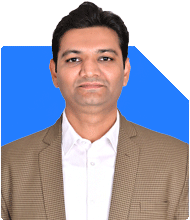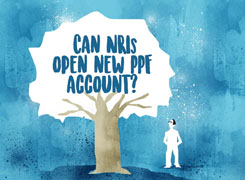Should I Invest 50 Lakhs for Good Returns?
Ramalingam Kalirajan |8442 Answers |Ask -Follow
Mutual Funds, Financial Planning Expert - Answered on Aug 05, 2024
He has an MBA in finance from the University of Madras and is a certified financial planner.
He is the director and chief financial planner at Holistic Investment, a Chennai-based firm that offers financial planning and wealth management advice.... more
.jpg)
my wife received 25L from the sale of her ancestral house..i have another 25L with me totaling to 50L..what ,where & how should i invest so as to get good returns
Asset Allocation
Split your Rs. 50 lakhs into different investment types.
This helps manage risk and get good returns.
A mix of equity, debt, and gold is good.
Equity Investments
Put some money in stock market through mutual funds.
This can give high returns over long term.
Choose funds with good past performance.
Debt Investments
Invest in fixed income options for steady returns.
Government bonds and company deposits are choices.
These are safer than stocks.
Gold Investments
Add some gold to your mix.
It protects against inflation.
Physical gold or gold funds both work.
Tax Planning
Choose tax-saving investments wisely.
ELSS funds can save tax and give good returns.
PPF is also a good tax-saving choice.
Emergency Fund
Keep some money for unexpected needs.
Put this in a savings account.
It should cover 6 months of expenses.
Review and Rebalance
Check your investments regularly.
Change mix if needed to meet your goals.
Do this every 6 months or yearly.
Seek Professional Help
Talk to a Certified Financial Planner.
They can make a plan just for you.
This helps you invest better.
Finally
Investing Rs. 50 lakhs needs careful planning.
A good mix of investments can give nice returns.
Regular review and expert help are important.
Best Regards,
K. Ramalingam, MBA, CFP,
Chief Financial Planner,
www.holisticinvestment.in
You may like to see similar questions and answers below
Ramalingam Kalirajan |8442 Answers |Ask -Follow
Mutual Funds, Financial Planning Expert - Answered on Jul 11, 2024
Ramalingam Kalirajan |8442 Answers |Ask -Follow
Mutual Funds, Financial Planning Expert - Answered on Jun 13, 2024
Ramalingam Kalirajan |8442 Answers |Ask -Follow
Mutual Funds, Financial Planning Expert - Answered on Aug 03, 2024
Ramalingam Kalirajan |8442 Answers |Ask -Follow
Mutual Funds, Financial Planning Expert - Answered on Oct 26, 2024
Dr Nagarajan J S K |401 Answers |Ask -Follow
NEET, Medical, Pharmacy Careers - Answered on May 15, 2025
Dr Nagarajan J S K |401 Answers |Ask -Follow
NEET, Medical, Pharmacy Careers - Answered on May 15, 2025
Dr Nagarajan J S K |401 Answers |Ask -Follow
NEET, Medical, Pharmacy Careers - Answered on May 15, 2025
Dr Nagarajan J S K |401 Answers |Ask -Follow
NEET, Medical, Pharmacy Careers - Answered on May 15, 2025
Dr Nagarajan J S K |401 Answers |Ask -Follow
NEET, Medical, Pharmacy Careers - Answered on May 15, 2025
Dr Nagarajan J S K |401 Answers |Ask -Follow
NEET, Medical, Pharmacy Careers - Answered on May 15, 2025
Vipul Bhavsar |83 Answers |Ask -Follow
Tax Expert - Answered on May 15, 2025
Vipul Bhavsar |83 Answers |Ask -Follow
Tax Expert - Answered on May 15, 2025
Vipul Bhavsar |83 Answers |Ask -Follow
Tax Expert - Answered on May 15, 2025
Vipul Bhavsar |83 Answers |Ask -Follow
Tax Expert - Answered on May 15, 2025
























